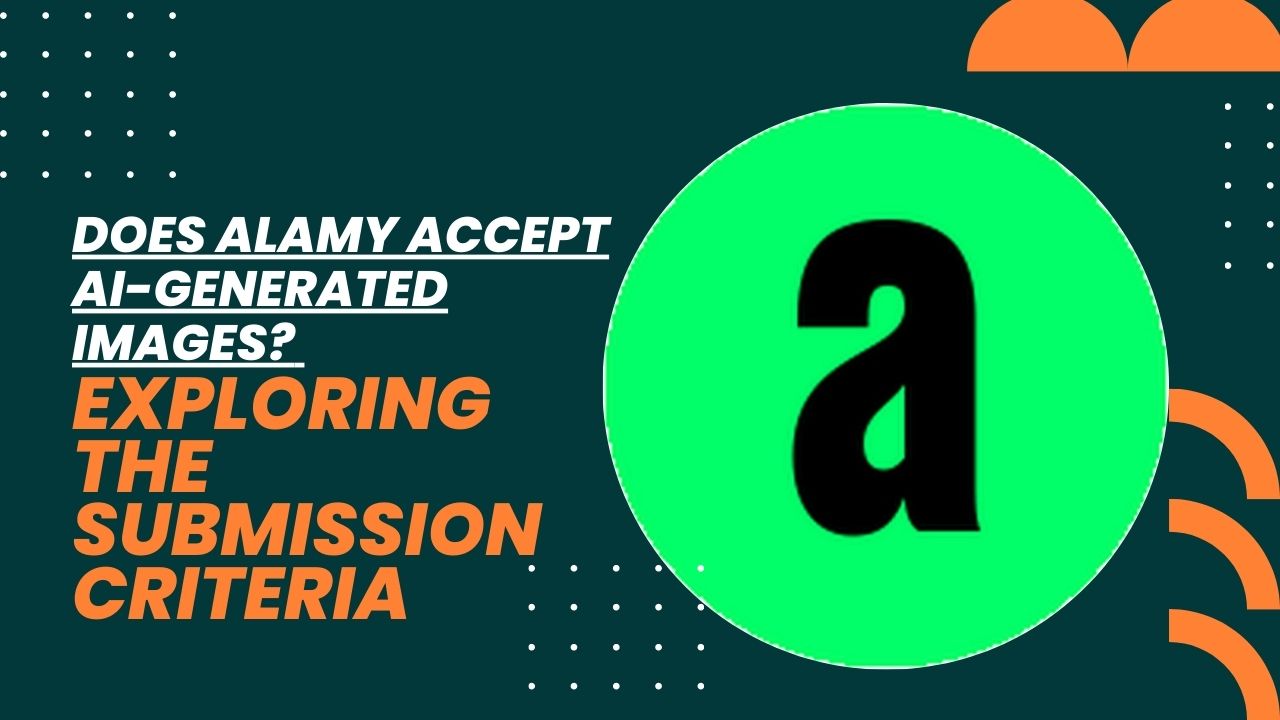I: Introduction:
In the rapidly evolving world of photography and digital imagery, the rise of artificial intelligence (AI) has brought forth new possibilities and challenges. One area where this impact is particularly felt is in the realm of stock photography, where platforms like Alamy play a crucial role. This blog post delves into the question of whether Alamy accepts AI-generated images and explores the submission criteria involved.As AI-generated images become more prevalent, understanding Alamy's stance on this innovative technology is essential for photographers, content creators, and enthusiasts alike. By examining Alamy's policies and criteria, we can gain insights into the evolving landscape of stock photography and its intersection with AI-generated imagery.Also Read This: How to Flip Images in Figma
II. Alamy's Acceptance of AI-Generated Images:

A. Alamy's official policy on AI-generated images:
Alamy, as a stock photography platform, has recognized the growing influence of AI-generated images and has formulated its stance on accepting such content. While Alamy's policies do not explicitly reject AI-generated images, they emphasize the need for transparency and adherence to specific criteria.B. The rationale behind Alamy's acceptance or rejection of AI-generated images:
Alamy's primary concern lies in ensuring that AI-generated images meet the same standards of quality, authenticity, and legality as traditionally captured photographs. While the platform values innovation, it also prioritizes the interests of buyers and maintains a commitment to ethical practices.C. Examples of AI-generated images that have been accepted by Alamy:
Alamy has accepted AI-generated images that demonstrate exceptional quality, and creativity, and comply with the platform's guidelines. These images often showcase unique perspectives, imaginative concepts, and technical proficiency, contributing to the diverse pool of visual content available on Alamy.By examining Alamy's policy and understanding the rationale behind their acceptance or rejection of AI-generated images, we can gain insights into the platform's approach to this emerging technology.Also Read This: Mastering the Art of Reading Blurred Text in Images
III. Submission Criteria for AI-Generated Images on Alamy:
A. Technical specifications and file formats required by Alamy:
AI-generated images submitted to Alamy must meet the platform's technical specifications and file format requirements. This typically includes specific resolutions, color profiles, and file types (such as JPEG or TIFF). Adhering to these specifications ensures compatibility and optimal display across various devices and platforms.B. Image quality and resolution guidelines for AI-generated images:
Alamy maintains stringent quality standards for all images, including AI-generated ones. The images must exhibit high resolution, sharpness, and clarity, free from artifacts or distortions. Additionally, Alamy expects AI-generated images to meet or exceed the same level of technical quality as traditionally captured photographs.C. Copyright and licensing considerations for AI-generated images:
AI-generated images submitted to Alamy must adhere to copyright and licensing requirements. Creators must ensure that they have the necessary rights or permissions to use any underlying content, such as stock photos or textures, incorporated into their AI-generated images. Proper attribution and documentation of licensing information are crucial for complying with Alamy's submission criteria.D. Ethical considerations and content restrictions for AI-generated images:
Alamy maintains content guidelines that apply to all images, regardless of whether they are AI-generated or not. These guidelines prohibit explicit or offensive content, infringing on intellectual property rights, or misleading representations. Creators should ensure that their AI-generated images align with Alamy's ethical standards and content restrictions.By understanding and adhering to Alamy's submission criteria, photographers and content creators can increase their chances of having their AI-generated images accepted on the platform while maintaining high ethical and quality standards.The following video is about Alamy Accept AI-Generated ImagesAlso Read This: How to Resize Images for Instagram Posts
IV. Challenges and Considerations for AI-Generated Images on Alamy:
A. Intellectual property issues and potential copyright infringements:
One of the significant challenges with AI-generated images is the potential infringement of intellectual property rights. AI algorithms may unknowingly incorporate copyrighted material or resemble existing works, leading to legal complications. Creators must carefully vet their AI-generated images to ensure they do not violate copyright laws and have the necessary permissions for any underlying content used.B. Authenticity concerns and the risk of deceptive or misleading content:
AI-generated images can sometimes blur the line between reality and fiction, raising concerns about authenticity. Alamy, as a reputable stock photography platform, aims to maintain the trust of its users. Therefore, the risk of submitting AI-generated images that may be perceived as deceptive or misleading requires careful consideration by creators.C. Quality control and the role of human curation in evaluating AI-generated images:
While AI algorithms are capable of producing impressive visuals, there may still be limitations in terms of artistic judgment and subjective quality evaluation. Alamy's challenge lies in ensuring that AI-generated images meet the same standards as traditionally captured photographs. Incorporating human curation and quality control mechanisms becomes essential to maintain the overall quality and integrity of the platform.Navigating these challenges requires creators to be diligent in understanding the legal and ethical implications of AI-generated images. By addressing issues related to intellectual property, authenticity, and quality control, Alamy can strike a balance between embracing AI-generated content and upholding its reputation as a reliable source of visual content.Also Read This: Inverting Image Colors in Canva
V. Benefits and Opportunities of AI-Generated Images on Alamy:
A. Innovation and creativity in image generation:
AI-generated images offer a realm of innovation and creativity that can push the boundaries of visual representation. With AI algorithms capable of generating unique compositions, styles, and concepts, Alamy can provide a diverse range of cutting-edge visuals to cater to the evolving needs of buyers.B. Meeting the demand for unique and diverse visual content:
AI-generated images can help address the demand for unique and diverse visual content. Traditional photography may have limitations in capturing certain subjects or styles, but AI algorithms can generate images that fulfill niche requirements, resulting in a broader selection of content on Alamy.C. Potential cost and time savings for photographers and content creators:
AI-generated images can potentially save time and cost for photographers and content creators. By leveraging AI algorithms, creators can automate certain aspects of the image generation process, reducing the need for extensive manual work. This can lead to increased productivity, allowing creators to focus on other aspects of their work.D. Personalization and customization opportunities:
AI-generated images can be tailored to specific preferences, allowing for personalized and customized visual content. Alamy can leverage AI algorithms to offer unique variations of images, enabling buyers to find visuals that align with their specific needs and preferences.By embracing AI-generated images, Alamy can tap into the benefits and opportunities offered by this technology. From fostering innovation and meeting diverse demands to providing cost and time savings, AI-generated images can enhance the overall user experience and expand the possibilities within the stock photography industry.Despite finger issues, the first hurdle passed as Alamy has accepted... @AlamyContent is curious about your policy on accepting/licensing AI-generated images? pic.twitter.com/NLkynr1S11
— Brutally Honest Alex (@ARotenbergphoto) September 18, 2022

 admin
admin








